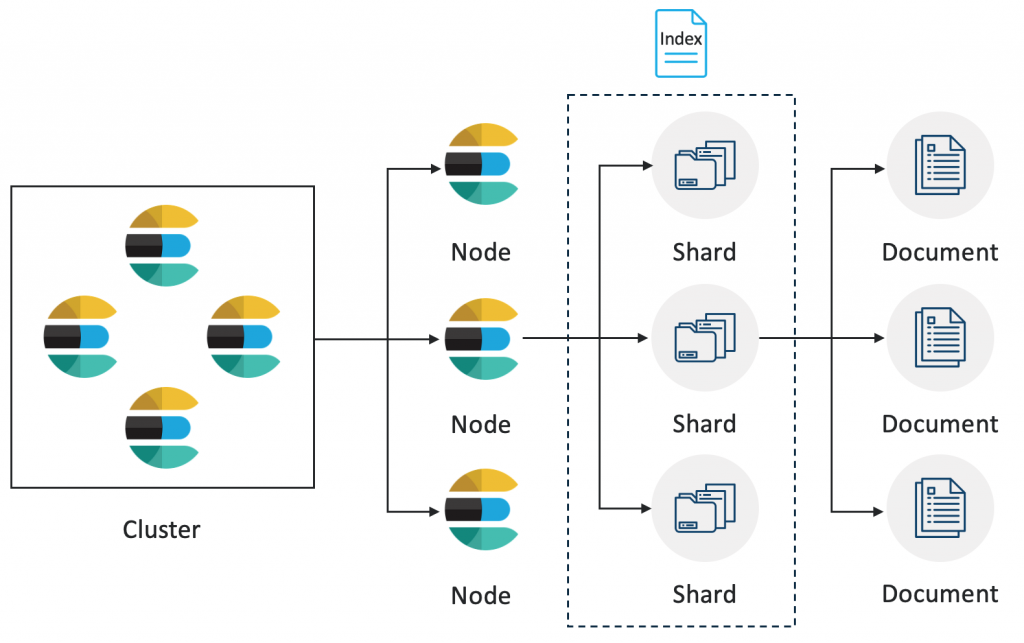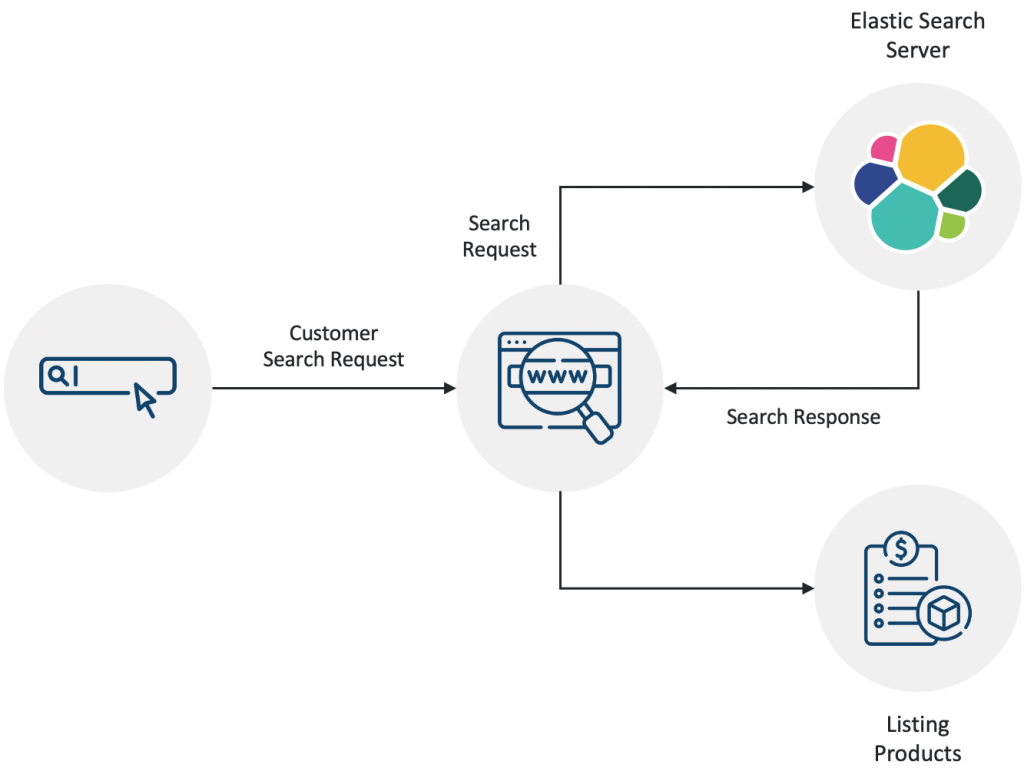Elasticsearch is an open-source, distributed search and analytics engine designed for horizontal scalability, high availability, and real-time search and analytics. It is built on top of the Apache Lucene search library and provides a RESTful API for indexing and searching data.

Key Concepts to Understand Elasticsearch
- Cluster – A cluster is a collection of one or more nodes (servers) that work together to store data and respond to search requests. Each cluster has a unique name and may contain multiple indices
- Node – A node is a single server that contributes in indexing and search tasks for the cluster as well as data storage
- Index – A collection of documents with comparable traits is called an index. Each document is a JSON object that is stored in the index and can be searched and retrieved independently
- Document – A document is the basic unit of information in Elasticsearch. It consists of a JSON object with key-value pairs that represent the data to be stored and indexed
- Shard – An index can be divided into multiple shards, each of which is a self-contained subset of the index’s data. This allows Elasticsearch to distribute the workload across multiple nodes in the cluster, which improves performance and scalability
- Query – A query is a search request that specifies the criteria for the data to be retrieved. Elasticsearch supports a wide variety of query types, including full-text, term, range, and more
- Aggregation – An aggregation is a way to group and summarize data in a query
- Mapping – A mapping is a schema that defines the fields and data types for a document in an index. Elasticsearch uses mappings to determine how to index and search the data

Elasticsearch also provides many features, such as real-time indexing, text analysis, auto-sharding, and automatic failover. It can be used for a wide variety of applications, including search engines, log analysis, e-commerce, and more. Additionally, Elasticsearch can be integrated with other tools and platforms, such as Kibana (a data visualization tool) and Logstash (a log processing tool).
Uses of Elasticsearch
- Search Engines – Elasticsearch can be used as the backend search engine for search applications. It is capable of handling large volumes of data and can search and retrieve results quickly, even from millions of documents
- E-commerce – Elasticsearch can be used in e-commerce applications to provide fast and accurate search results for products
- Logging and Monitoring – Elasticsearch can be used to store and search log data from various sources, such as servers, applications, and network devices
- Business Intelligence – Elasticsearch can be used to store and analyze data for business intelligence applications. It can be used to generate reports, dashboards, and visualizations that provide insights into key performance indicators (KPIs)
- Security Analytics – Elasticsearch can be used to store and analyze security data, such as logs, network traffic, and user activity

Advantages and Disadvantages of Elasticsearch
Advantages
- Scalability – Elasticsearch is a distributed search engine that can scale horizontally across multiple nodes, allowing it to handle large volumes of data and high query loads
- Speed – Elasticsearch can search and retrieve results from millions of documents in real-time, making it suitable for use in applications that require fast search and analysis capabilities
- Full-text Search – Elasticsearch supports full-text search, which allows users to search for data based on specific terms or phrases within documents, making it ideal for search applications
- Data Visualization – Elasticsearch can be easily integrated with data visualization tools such as Kibana to create charts, graphs, and dashboards that provide insights into data
- Flexibility – Elasticsearch provides a flexible data model that allows users to define their own data mappings, making it suitable for a wide range of use cases
Disadvantages
- Complexity – Elasticsearch can be complex to set up and configure, especially for users who are new to search and analytics technologies
- Maintenance – Elasticsearch requires ongoing maintenance to ensure optimal performance, which can be time-consuming and costly
- Storage – Elasticsearch requires a significant amount of storage space, especially for large volumes of data, which can be costly
- Security – Elasticsearch does not provide built-in security features, and users need to take extra precautions to secure their data
- Resource Requirements – Elasticsearch requires significant system resources such as CPU, memory, and disk space, which can be a limiting factor for smaller organizations
Overall, Elasticsearch is a feature-rich search and analytics engine that provides a wide range of tools for storing, searching, and analyzing data. Its distributed architecture, full-text search, and flexible schema-less design make it a popular choice for a wide range of applications, from search engines and e-commerce to log analysis and security analytics.





